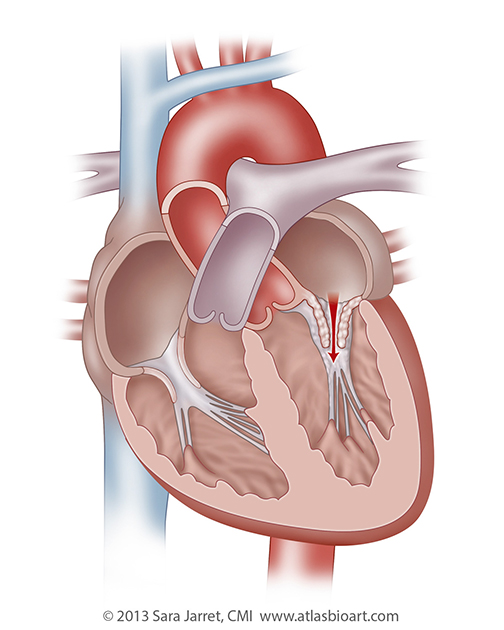Mitral Valve Stenosis
 Mitral stenosis is often caused by rheumatic fever (untreated strep throat causes this to occur years later). It can also be caused by congenital defects, tumors (such as atrial myxoma), complications of prior mitral valve repair, and others. The problem with mitral stenosis is that it prevents blood from traveling from the left atrium to the left ventricle, so blood "backs up" into the lungs and congestive heart failure results. Mitral stenosis can be repaired but is often treated with valve replacement. Some patients can be treated with balloon dilatation (a catheter-based procedure). In fact, for patients with appropriate anatomy for this procedure, it is preferred over surgery.
Mitral stenosis is often caused by rheumatic fever (untreated strep throat causes this to occur years later). It can also be caused by congenital defects, tumors (such as atrial myxoma), complications of prior mitral valve repair, and others. The problem with mitral stenosis is that it prevents blood from traveling from the left atrium to the left ventricle, so blood "backs up" into the lungs and congestive heart failure results. Mitral stenosis can be repaired but is often treated with valve replacement. Some patients can be treated with balloon dilatation (a catheter-based procedure). In fact, for patients with appropriate anatomy for this procedure, it is preferred over surgery.
Patients with mitral stenosis can also have mitral regurgitation (due to the leaflets of the mitral valve being stiff and immobile). In this setting, surgery is often the procedure of choice as the leakiness can worsen with balloon dilatation (catheter-based).
Mitral stenosis remains the most common mitral valve disease in the world, although it is much less common in the United States.





